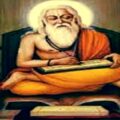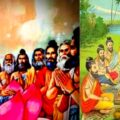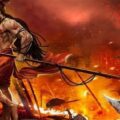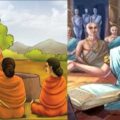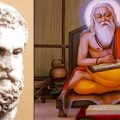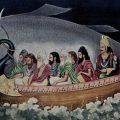A Genealogical Account of Bhrigu Gotra from Saptarshis
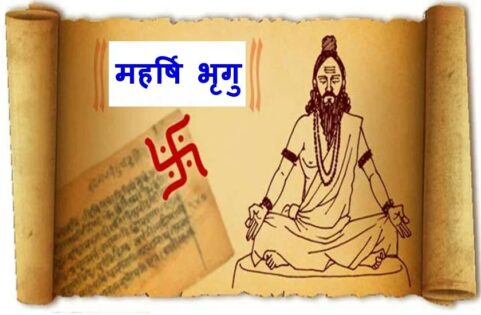
Bhrigu was one of the Mānasaputras of Brahma I. According to Matsya Purāṇa, Bhuvana, Bhauvana, Sujanya, Sujana, Kratu, Vasu, Mūrdha, Tyajya, Vasuda, Prabhava, Avyaya and Dakśa were the twelve sons of Bhrigu. Bhrigu married Divya, daughter of Puloma, but another account informs us that Bhrigu also married Khyāti, daughter of Prajāpati Dakśa.
Indra married Śachī, the daughter of Asura King Pulomā, in the beginning of Vaivasvata Manvantara. Therefore, Bhrigu, the husband of Divyā and Khyāti, was a later descendant of Bhrigu. He had two sons, Dhātā and Vidhātā, and a daughter, Śri (Lakśmī), from Khyāti. Vishnu married Śri (or Lakśmī).
Bhrigus were the traditional priests of Haihaya kings, the descendants of King Vītahavya. During the reign of Haihaya King Kritavīrya, Bhrigus had to flee to another kingdom. Jamadagni II, the grandson of Āpnuvāna, married Reṇukā, daughter of King Renu, who was the contemporary of Rishi Agastya. Jamadagni had five sons, Rumaṇvān, Suṣeṇa, Vasu, Viśvāvasu and Paraśurāma.
King Chitraratha of Mrittikāvatī kingdom was the contemporary of Jamadagni II. King Kritavīrya’s son was Arjuna Kārtavīrya, also known as Sahasrabāhu. Arjuna Kārtavīrya’s sons killed Jamadagni II. Angered, Paraśurāma killed all of them except the five sons of Arjuna Kārtavīrya. Thereafter, Paraśurāma migrated southwards. Most probably, Vena and Prithu II were the descendants of Bhrigu Rishi and contemporaries of Paraśurāma.
Rigveda refers to Vena, Prithu and Rāma. One Vena Bhargava was the author of a hymn of Rigveda. Rāma Jāmadagnya authored the 110th Sūkta of the tenth Mandala of Rigveda. One mantra of Rigveda mentions Vena, Duḥśīma Prithu and Rāma. So, Rāma mentioned in Rigveda was Paraśurāma, the son of Jamadagni II.
Vayu Purāṇa says that Śiva took Kavi as his son. Śiva wanted to punish Uśanas or Śukrāchārya, the son of Kavi but Umā saved him. Later, Śukrāchārya became the guru of Asuras. Śukrāchārya married Go, a Pitri-kanyā (descendant of Pitri clan). He had four sons, Tvaṣṭā II, Varūthi, Chanḍa and Marka. Varūthi and his descendants became the gurus of Daityas. Chanḍa and Marka were the famous teachers of Prahlāda, son of Hiraṇyakaśipu. Śukrāchārya had a daughter, Devayāni, from his second wife Jayantī. King Yayāti married Devayāni.
Matsya Purāṇa gives the following list of Rishis who were born in Bhrigu family:
“Bhrigu, Chyavana, Āpnuvāna, Aurva, Jamadagni, Gritsamada, Sanaka, Bida, Paulastya, Baijabhrit, Rishi, Kāyani, Śākaṭāyana, Grāmyāyani, Katāyani, Āpastambi, Bilvi, Naikaśi, Kapi, Ārṣṭhiṣeṇa, Rupi, Yāska, Mathita, Jaivantyāyani, Mauñja, Pili, Chali, Bhagila, Bhāgavitti, Kauśapi, Kāśyapi, Balapi, Saura, Tithi, Śramadagepi, Gārgīya, Jābāli, Pauṣṇāyana, Rāmoda, Raivasa, Vaivasa, Śālāyani, Śākaṭākśa, Maitreya, Khāṅdava, Drauṇāyana, Rakumāyani, Apiśi, Apikāyani, Hamsajihva, Vadhrāśva, Divodāsa, Ekāyana, Yajñapati, Matsyagandha, Pratyaha, Sauri, Aukśi, Kārdamāyani, Vātsya, Dandi, Nādāyana, Vaigayana, Vītahavya, Paila, Śaunaka, Śaunakāyana, Karṣaṇi, Vaihīnari, Nīla, Lubdha, Sāvarṇika, Vishnu, Paura, Balaki, Ailika, Mriga, Mārgeya, Mārkanḍa, Manda, Mānḍavya, Manḍūka, Phenapa, Stanita, Sthalapinda, Śikavarṇa, Śarkarākśī, Jaladhi, Saudhika, Kśubhya, Kutsa, Maudgalāyana, Mankāyana, Devapati, Pandurochi, Gālava, Sānkritya, Chataki, Sarpi, Yagña, Pindāyana, Gārgyāyana, Gayana, Garhāyana, Goṣṭhāyana, Vahyāyana, Vaiśampāyana, Vaikarnini, Śārngarava, Yajñeyi, Bhrashtakayani, Lālāti, Nākuli, Laukśinya, Uparimandala, Aluki, Sauchaki, Kautsa, Paingalāyani, Sātyāyani, Mālāyani, Kautili, Kauchahastika, Sauha, Sokti, Kauvakśi, Kausi, Chāndramasi, Naikajivha, Jivhaka, Vyādhajya, Lauhavairi, Śāradvati, Netishya, Lolākśi, Chalakundala, Vāngayani, Anumati and Purnimagatika.”
Matsya Purāṇa also mentions that nineteen Bhārgavas – Bhrigu, Kāśyapa, Prachetā, Dadhīcha, Āpnuvāna or Ātmāvan, Urṣa, Jamadagni, Veda, Sārasvata, Ārṣṭiṣeṇa, Chyavana Vītahavya, Savedhasa, Vainya, Prithu, Dividāsa, Brahmavān, Gritsamada and Śaunaka – were the authors of Veda Mantras (hymns).
Features image source: Google.

